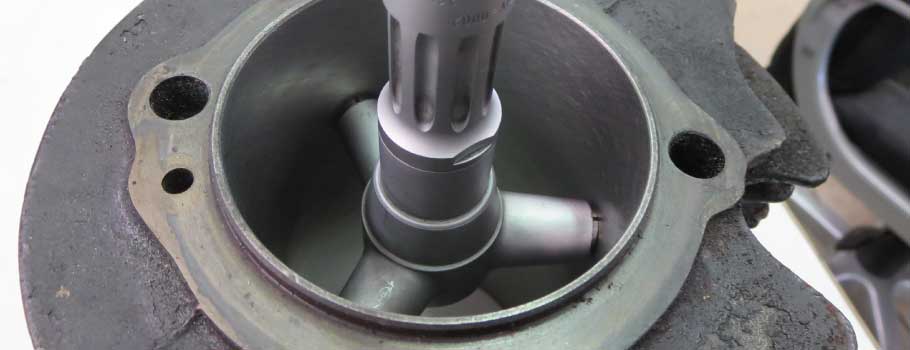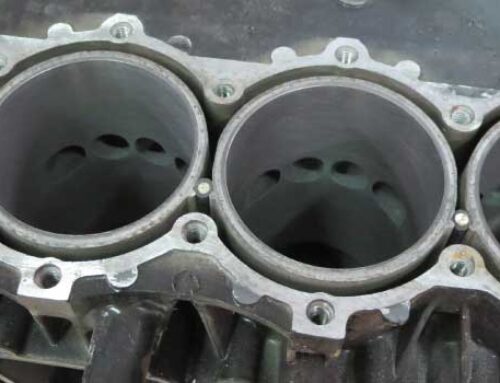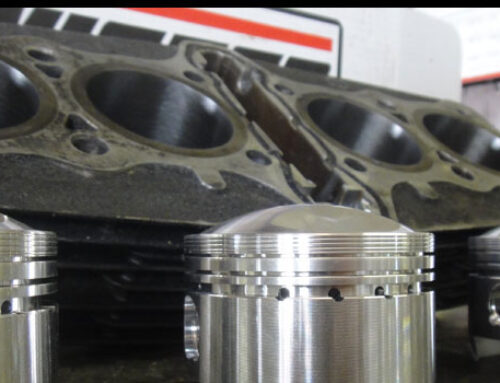In the previous article (What is cylinder boring and how is it done?) we explained the process of cylinder boring and the tooling and knowledge required. We mentioned that deciding what size to bore to usually depends on how much material needs to be taken out of the cylinder to machine out the damage on the cylinder walls. In this article we will go in depth and describe the process of finding that magic number and how to decide on bore size when boring you’re engine block.
What to expect:
So you’ve pulled the engine apart and brought the block to your local machine shop or sent the block out for repair. The first thing that needs to be done is to measure the size of the current bore and find out what size the STD (standard) bore size is. You will see these measurements in both the English measuring system as well as the Metric. Pistons are usually offered from standard sizes and larger. They are measured in increments of mm (millimeters), inches, or ten thousands of and inch (.010 or 10/1000).
Example:
This would be a standard bore measurement that you would see in your manual for your engine.
81 mm or 3.189 inches
The tools needed:
Measuring the cylinder size requires specialty measuring tools called either a telescope gauge and a micrometer or an inside micrometer. Most people don’t have these tools and even if they do don’t know how to properly use them. This is where your local machine shop will come in handy.
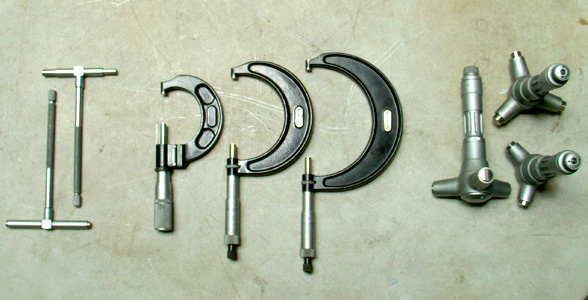
Getting the measurement:
With your inside micrometer or telescope gauge and micrometer in hand measure near the top of the cylinder. This is normally where most of the wear is going to be and usually the largest part of the bore. On 2-stroke engines most of the wear will be near the exhaust port (top or bottom). Knowing the size of the standard bore and the measurement you have just taken of the existing bore you now have an idea of what piston size you may need. This is only a guideline number. Machining the cylinder is the only true way of knowing what size the cylinder will bore tru at. Time and time again people have ordered a +.010 piston and the machinist was not able to clean the cylinder bore at this number and requiring an order of a larger piston wasting time and money. It is not uncommon to need a .020 over piston to get a straight tru bore.
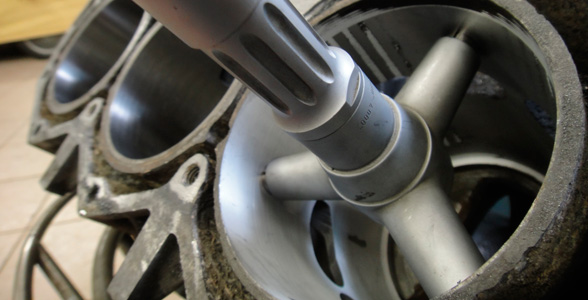
How big of bore should you go to?
Finding out how much material needs to be taken out of the cylinder wall to clean up the damaged cylinder is usually the deciding factor of what size bore to go with. Available piston sizes will also be a factor in the decision making process.
What are big bore kits and when to use them?
Piston and sleeve manufacturers usually have a few different sizes of pistons and sleeves that fit a particular engine block. If the amount of material that needs to be removed from the cylinder is greater than the factory sleeve, then you have the option to go with an oversized sleeve and piston kit (also called a big bore kit). Normally, you will not want to go any larger than next piston size necessary to get a clean bore so that you get another opportunity to bore the cylinder again.
In some cases, you may also want to use an oversize bore to increase horsepower of the engine but this is not usually the most beneficial route to take if horsepower is your goal.
Choosing the right piston size:
Piston Sizes – Most piston manufactures make piston kits in the following sizes:
|
English
|
Metric
|
|
|---|---|---|
|
STD. Bore
|
STD. Bore
|
Manufactured specification size |
|
+ .010
|
0.25 mm
|
Ten thousands of an inch over manufactured size |
|
+ .020
|
.050 mm
|
Twenty thousands of an inch over manufactured size |
|
+ .030
|
.075 mm
|
Thirty thousands of an inch over manufactured size |
|
+ .040
|
.1 mm
|
Fourty thousands of an inch over manufactured size |
*There are some piston sets that are offered up to .3 mm oversize and sometimes only STD sizes are available.
Choosing the right compression ratio (4-strokes)
For 4-stroke engines you may see different compression ratios. Most compression ratios will be from 8-1 compression all the way up to 13.5-1 compression. Anything over 10-1 compression may force you to run premium or race fuel.
*Piston compression ratios are explained in detail in our article “Piston compression ratios explained”.
Cast piston or a forged piston:
Many times there are forged aluminum pistons and cast aluminum pistons available. In most cases a cast aluminum piston is the most practical option in non-racing applications because it is very forgiving. A cast piston is not the strongest piston and can break apart.
A forged piston is extremely strong but has a tendency to expand rapidly if the engine is not warmed up properly. If you race your cold engine with forged pistons and don’t let your engine warm up to operating temperature you can seize your engine. Forged pistons are not forgiving with cold engines. Outboard engine owners beware, this is VERY common. Cold seizing is almost as bad as racing an overheated engine.

